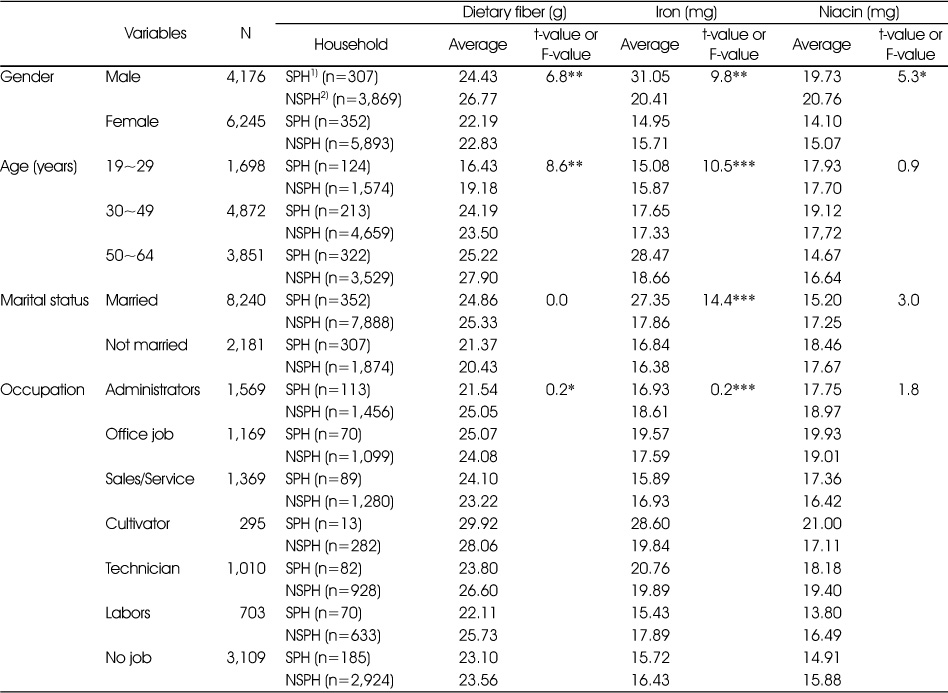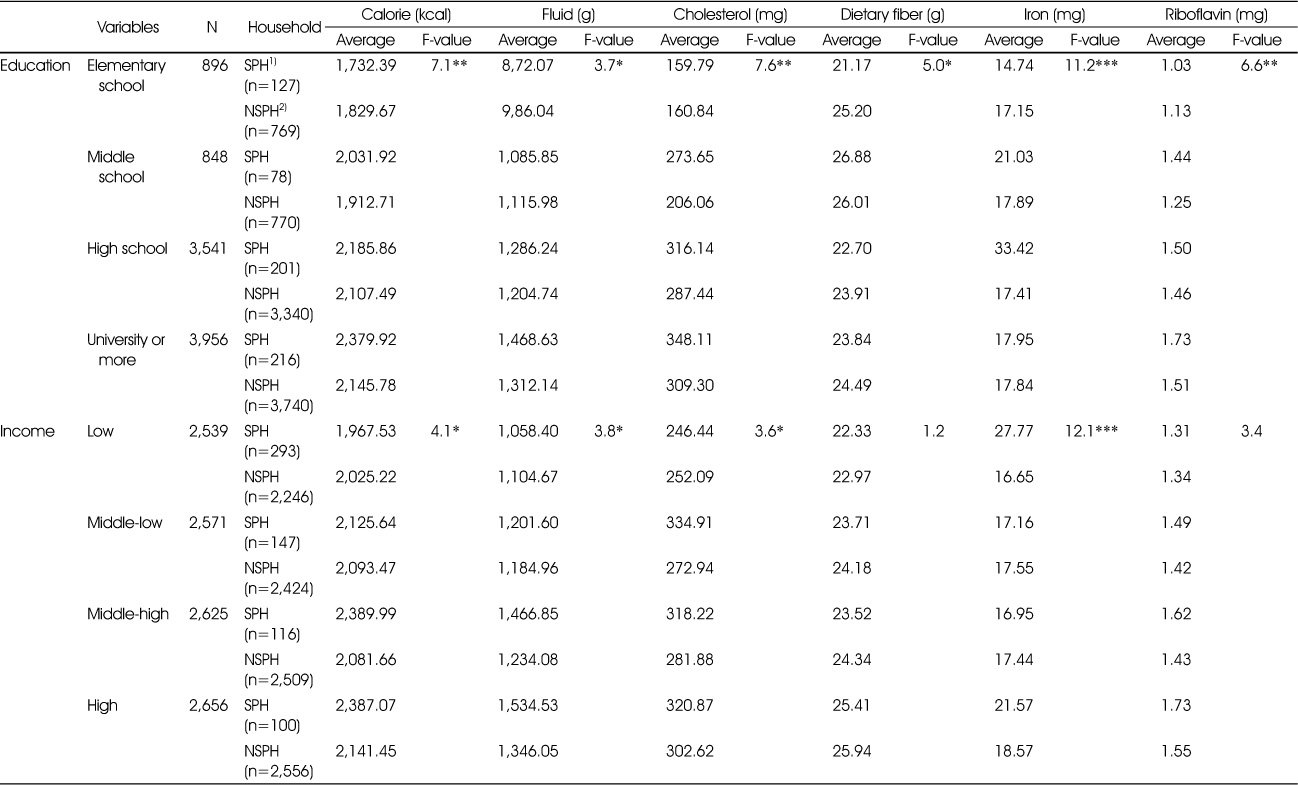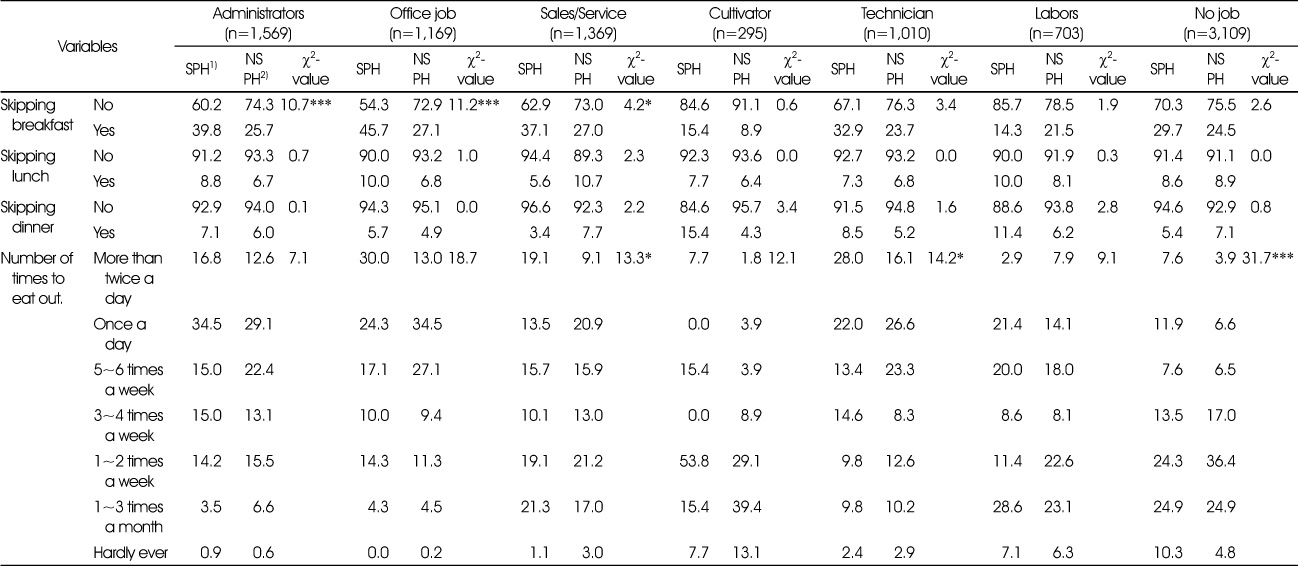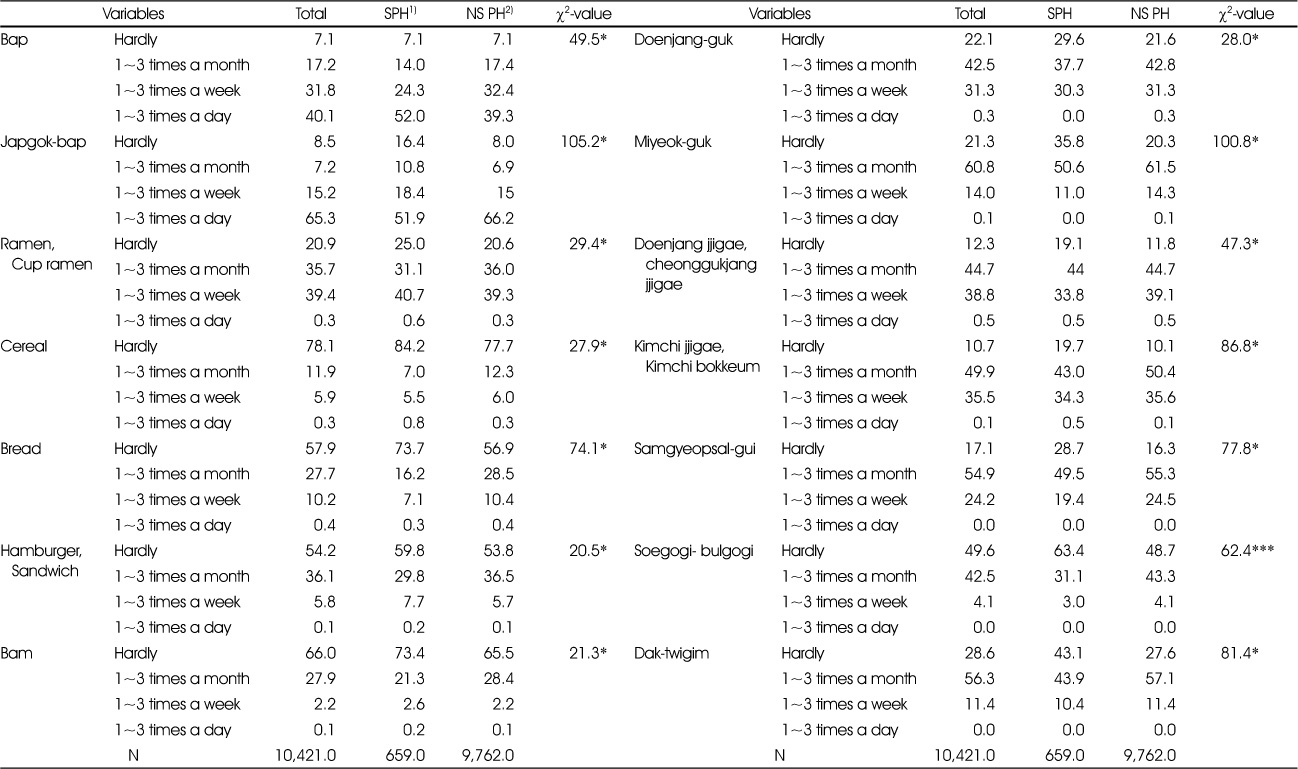References
1. Statistics Korea. Population census [internet] Statistics Korea; 2015. cited 2015 Apr 20. Available from:
http://kostat.go.kr/.
2. Kim HY. Floating families in Korea: Focusing on one-person households. J Soc Res 2014;15(2):255–292.
4. Kang ET, Kang JK, Ma KR. Subjective well-being of one-person households: focus on non-married and married one-person households. J Soc Sci 2016;27(1):3–23.
5. Gerrior SA, Guthrie JF, Fox JJ, Lutz SM, Keane TP, Basiotis PP. Differences in the dietary quality of adults living in single versus multiperson households. J Nutr Educ Behav 1995;27(3):113–119.
6. Daniels S, Glorieux I, Minnen J, van Tienoven TP, Weenas D. Convenience on the menu? A typological conceptualization of family food expenditures and food-related time patterns. Soc Sci Res 2015;51:205–218.
7. Daniels S, Glorieux I. Convenience, food and family lives. A socio- typological study of household food expenditures in 21st-century Belgium. Appetite 2015;94:54–61.
8. An HK. A study on the recognition and practice for reducing sodium intake of one-person households [Marster's thesis] Chungang University; 2015.
9. Yue YA. The effect of food-related lifestyle on HMR product evaluations and satisfaction for single-person households: focused on convenience store private-brand products [Marster's thesis] Sungkyunkwan University; 2015.
10. Lee KI, Hwang YJ, Ban HJ, Lim SJ, Jin HJ, Lee HS. Impact of the growth of single-person households on the food market and policy tasks Korea Rural Economic Institute; 2015. 10. Report No. 762.
11. Nam SY. Differences in dietary, nutritional and health status between single-person households and non-single person households in Korean adults by sex and age group [Marster's thesis] Inha University; 2016.
12. Korean Society of Food and Technology. Dictionary of food & cookery science Paju: Kyumoonsa; 2003. p. 424–441.
13. Serdula MK, Gillespie C, Kettel-Khan L, Farris R, Seymour J, Denny C. Trends in fruits and vegetable consumption among adults in the United States: Behavioral risk factor surveillance system, 1994-2000. Am J Public Health 2004;94(6):1014–1018.
14. Kwon JH, Shim JE, Park MK, Paik HY. Evaluation of fruits and vegetables intake for prevention of chronic disease in Korean adults aged 30 years and over: Using the third Korea National Health and Nutrition Examination Survey (KNHANES III), 2005. Korean J Nutr 2009;42(2):146–157.
15. Paquette MC. Perceptions of healthy eating: state of knowledge and research gaps. Can J Public Health 2005;96(Suppl 3):S15–S19.
16. Lee SH, Shim JS, Kim JY, Moon HA. The effect of breakfast regularity on eating habits, nutritional and health status in adults. Korean J Nutr 1996;29(6):533–546.
17. Min CY, Noh HY, Kang YS, Sim HJ, Baik HW, Song WO, et al. Skipping breakfast is associated with diet quality and metabolic syndrome risk factors of adults. Nutr Res Pract 2011;5(5):455–463.
18. Yun S, Jeong HR, Kim MH. A survey on the breakfast skipping rate of Korean adults relative to their lifestyle and breakfast skipping reasons and dietary behavior of breakfast skippers. Korean J Community Nutr 2010;15(2):191–205.
19. Cho SH, Jang JH, Ha TY, Lee KS, Kim MK, Seo JS. A survey on breakfast of workers in Daegu area. Korean J Community Nutr 2004;9(6):673–682.
20. Lee SH, Kim JY, Moon HA. The effect of breakfast regularity on eating habits, nutritional and health status in adults. Korean J Nutr 1996;29(5):533–546.
21. Choi MK. An analysis of groups with diet problems associated with dining out. Korean J Food Nutr 2008;21(4):536–544.
22. Bes-Rastrollo M, Basterra-Gortari FJ, Sanchez-Villegas A, Marti A, Martinez JA, Martinez-Gonzalez MA. A prospective study of eating away-from-home meals and weight gain in a Mediterranean population: the SUN (Seguimiento Universidad de Navarra) cohort. Public Health Nutr 2010;13(9):1356–1363.
23. Kang YW, Hong KE, Choi HJ, Joung H. Dining-out behaviors of residents in Chuncheon city, Korea, in comparison to the Korean National Health and Nutrition Survey 2001. Nutr Res Pract 2007;1(1):57–64.
24. Satia JA, Galanko JA, Siega-Riz AM. Eating at fast-food restaurants is associated with dietary intake, demographic, psychosocial and behavioral factors among African Americans in North Carolina. Public Health Nutr 2004;7(8):1089–1096.
25. Koo S, Park K. Dietary behaviors and lifestyle characteristics related to frequent eating out among Korean adults. J Korean Soc Food Sci Nutr 2013;42(5):705–712.
26. Kim MH, Kim H, Lee WK, Kim SJ, Yeon JY. Food habits and dietary behavior related to using processed food among male college students residing in dormitory and self-boarding in Gangwon. Korean J Community Nutr 2013;18(4):372–385.
27. Choi MK, Kim JM, Kim JG. A study on the dietary habit and health of office workers in Seoul. Korean J Food Cult 2003;18(1):45–55.
28. Lee YM, Cho WK, Oh YJ. Comparison of eating behavior between commensality and solo-eating of university students by BMI. Korean J Community Nutr 2012;17(3):280–289.
29. Tani Y, Kondo N, Takagi D, Saito M, Hikichi H, Ojima T, et al. Combined effects of eating alone and living alone on unhealthy dietary behaviors, obesity and underweight in older Japanese adults: Results of the JAGES. Appetite 2015;95:1–8.
30. Korea Health Industry Development Institute. National food & nutrition statistics I: based on 2014 Korea National Health and Nutrition Examination Survey Cheongju: Korea Health Industry Development Institute; 2016. p. 9–60.
31. Chang CS, Eun JH. An analysis of chestnut purchase behavior by consumer characteristics. Korean J For Econ 2016;23(2):1–7.
32. Chung LN, Lee HY, Yang IS. Preference, satisfaction, and repurchase intention of consumers for home meal replacements (HMR) by product categories. Korean J Food Cookery Sci 2007;23(3):388–400.
33. Lee JY, Shin AS. Vegetable and fruit intake in one person household: The Korean National Health and Nutrition Examination Survey (2010~2012). J Nutr Health 2015;48(3):269–276.
34. Lee KI, Ban HJ, Heo SY, Park IH, Kim TH, Jin HJ. The consumer behavior survey for food: 2014 food consumption behavior survey basic analysis report Korea Rural Economic Institute; 2014. 12. E16-2014.
35. Choi MK. An analysis of groups with diet problems associated with dining out. Korean J Food Nutr 2008;21(4):536–544.
36. Lee SL, Lee SJ. The effects of eating habits and food consumption lifestyle on dietary life satisfaction of one-person households. J Consum Cult 2016;19(3):115–133.
37. Park JH, You SY. Analysis on food consumption behavior and dietary satisfaction according to household type. Korean J Agric Econ 2016;57(2):103–138.
38. Bae SJ. Comparison of health behaviors among single- and multiple- member households. Am J Health Behav 2007;31(5):514–525.
39. Heo YK, Sim KH. Dietary attitude of single households in metropolitan areas. Korean J Food Nutr 2016;29(5):735–745.
40. Chu SK, Kang NE, Yi SH. The effects of nutrition evaluation related to suitable food supply program for elders living alone in Sungnam city. Korean J Food Nutr 2007;20(4):467–475.










